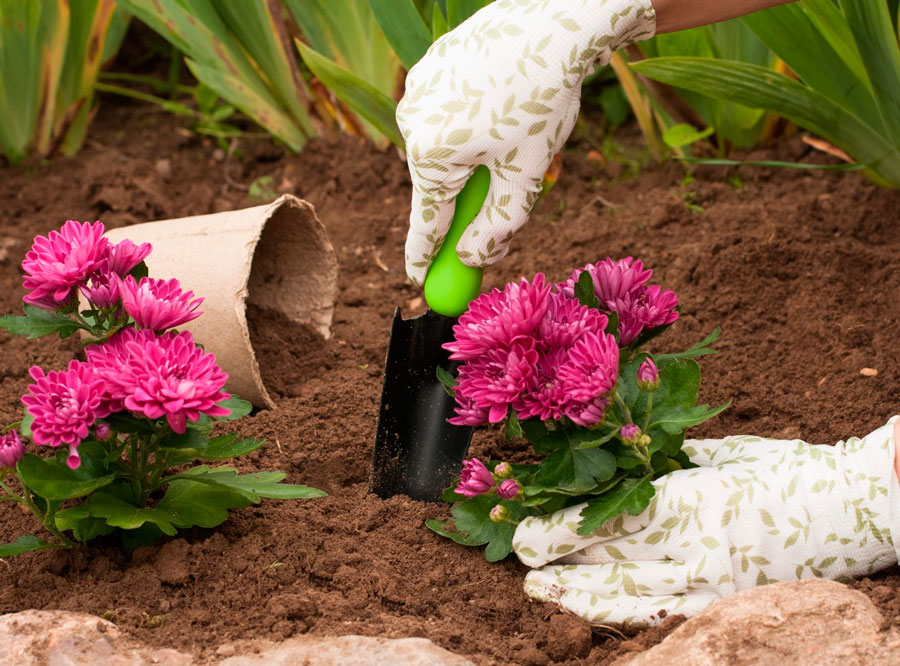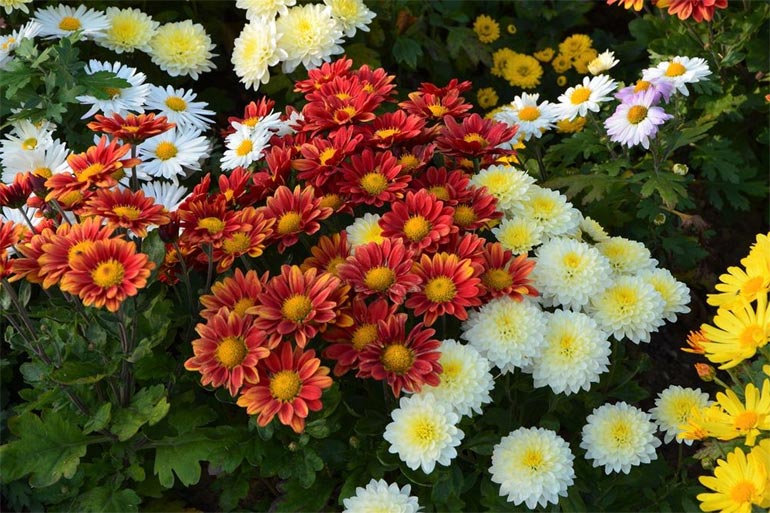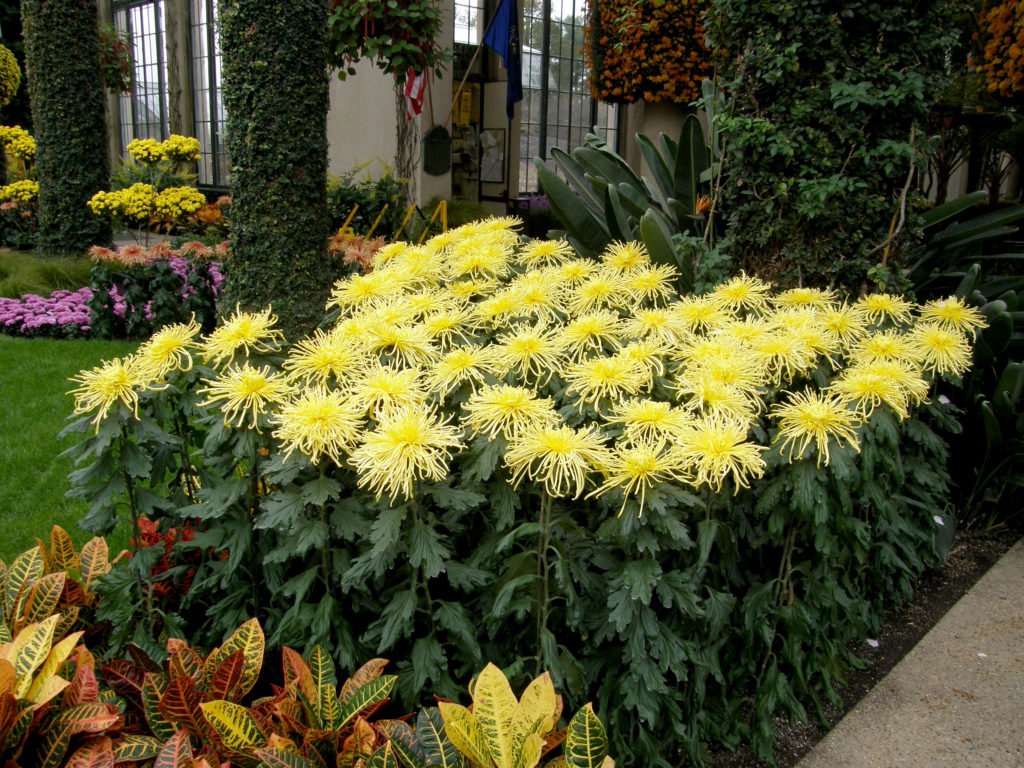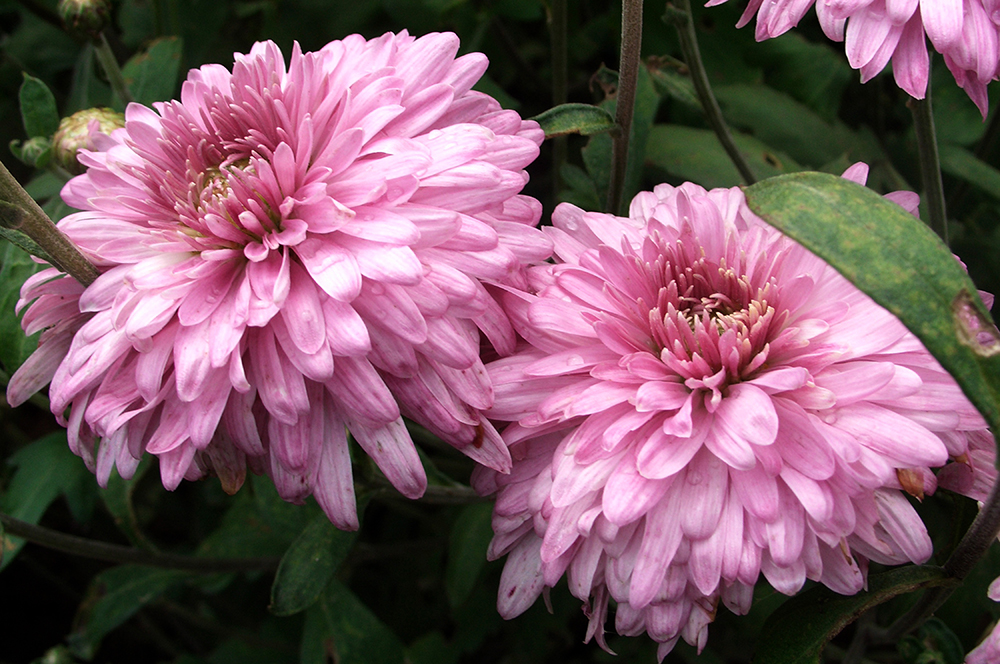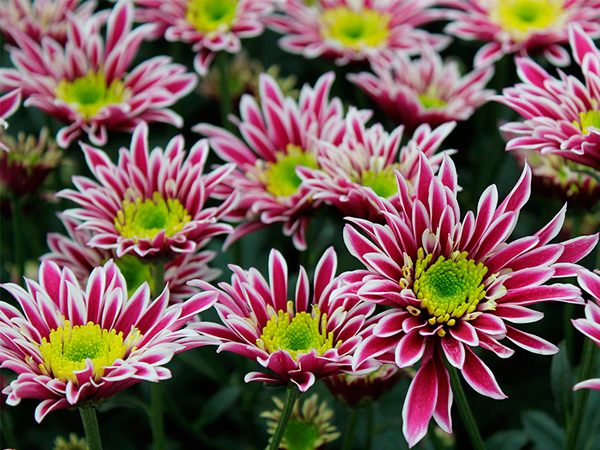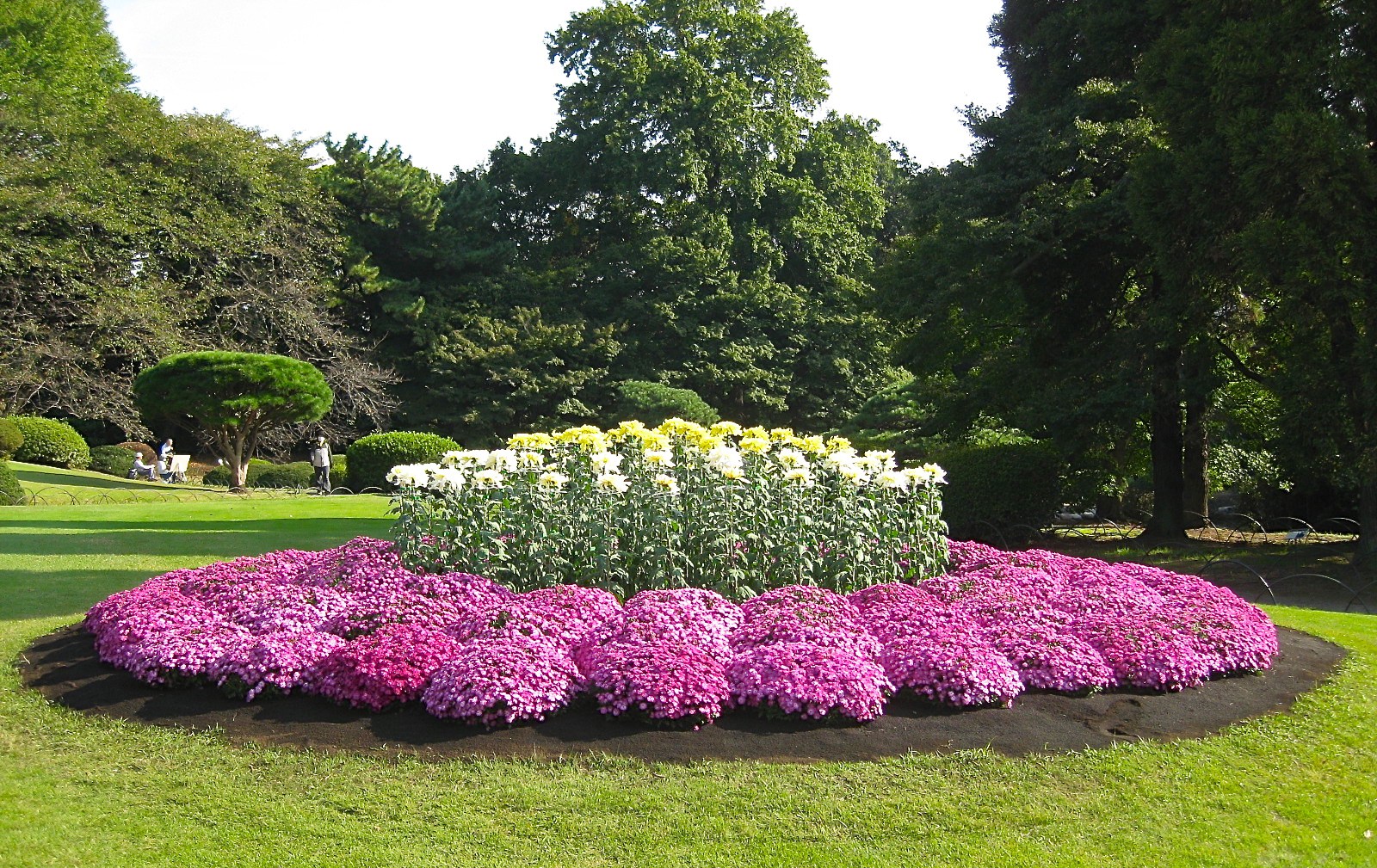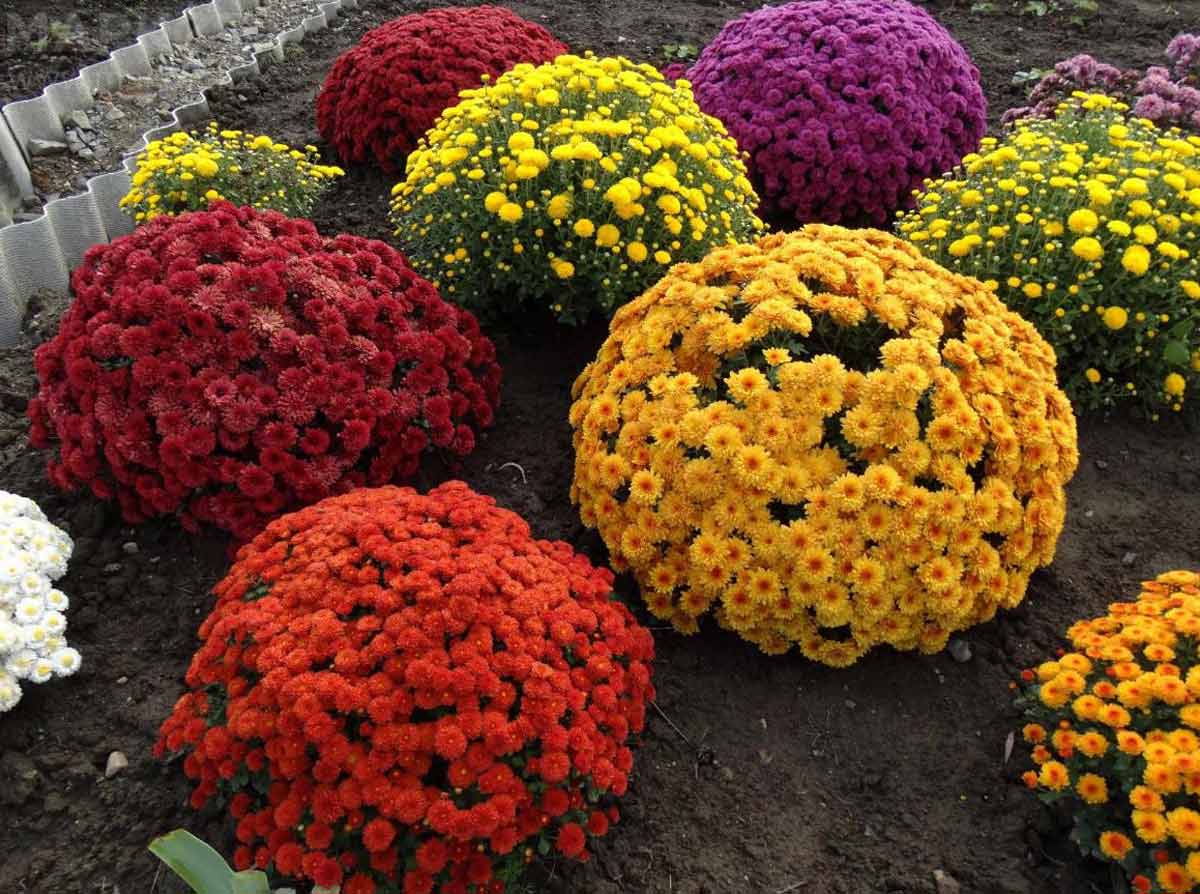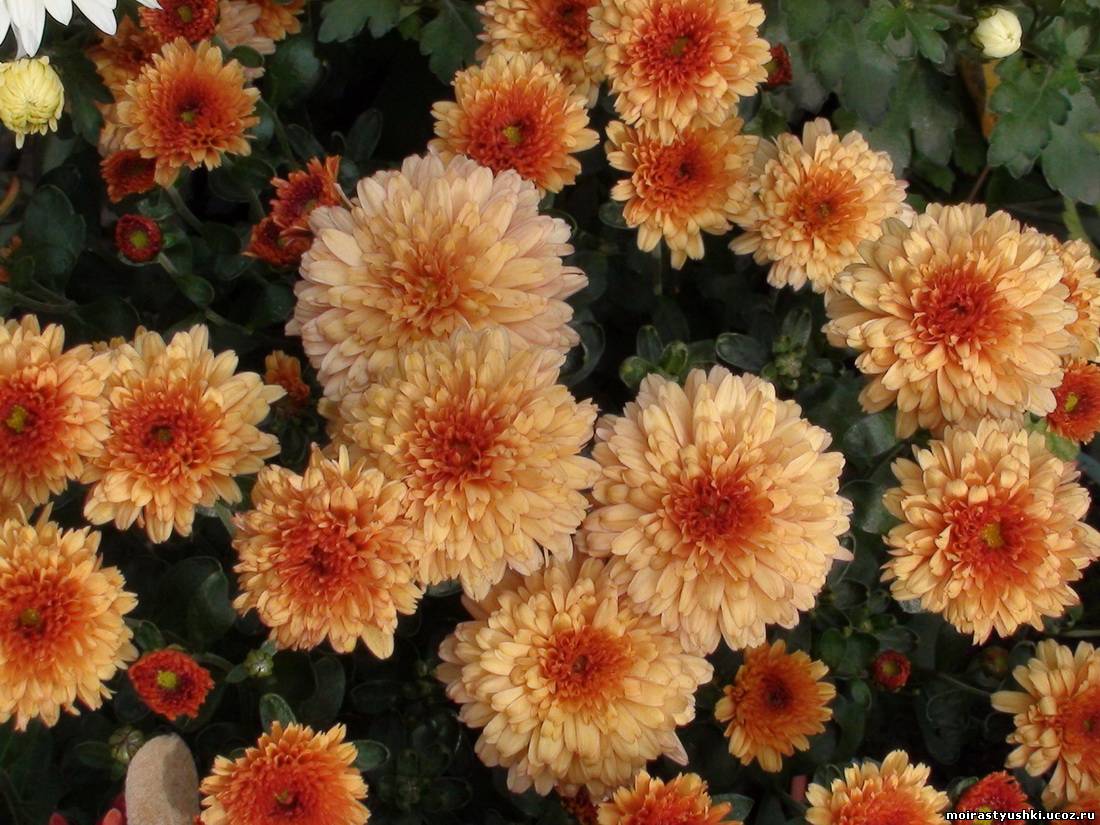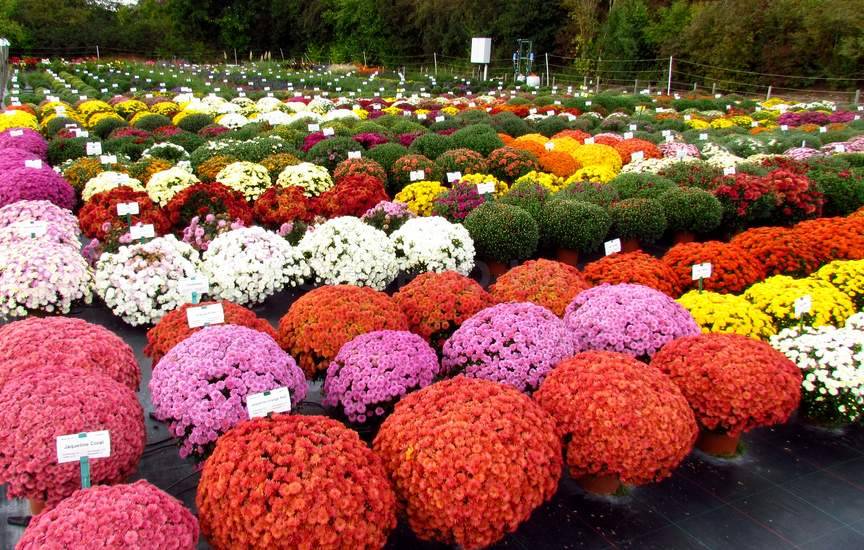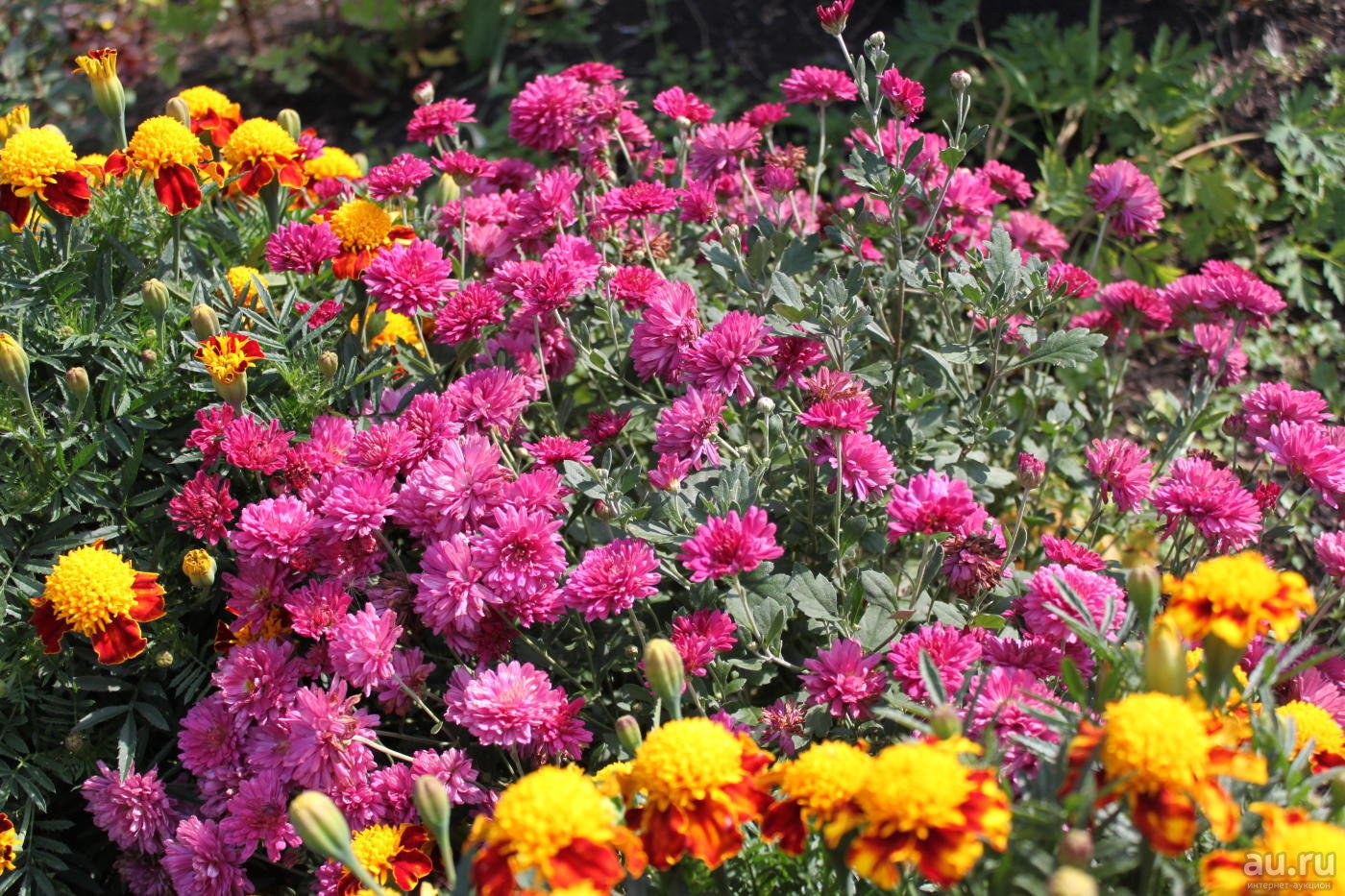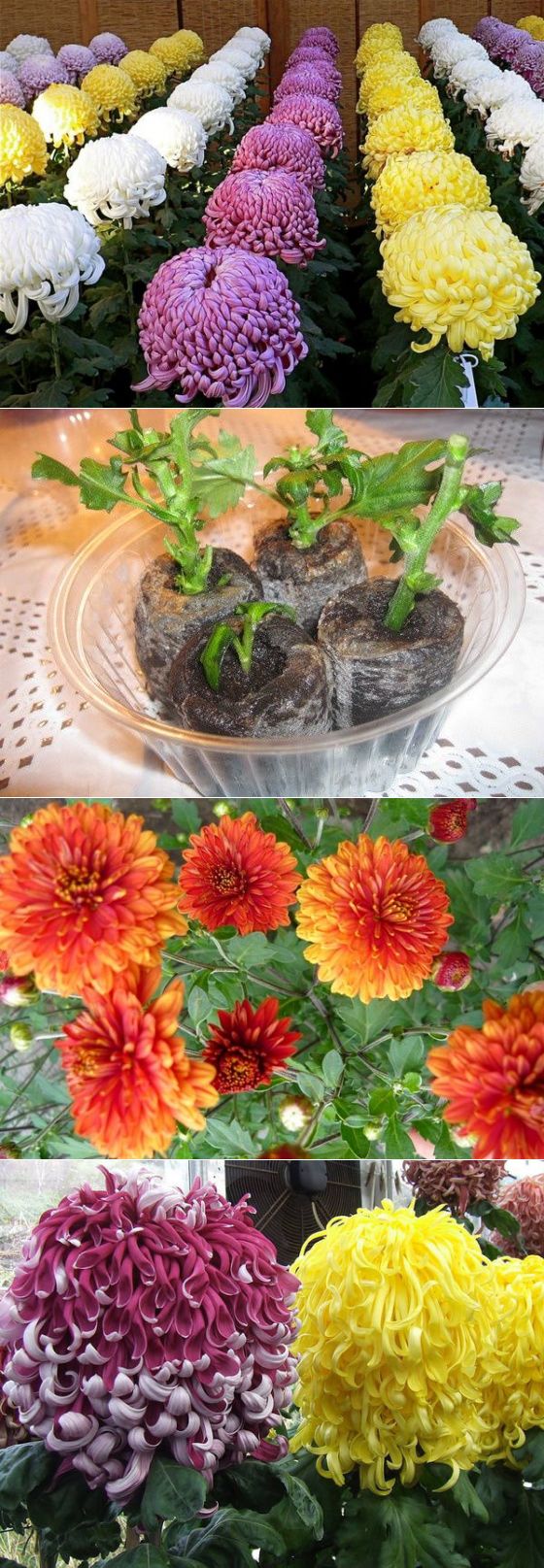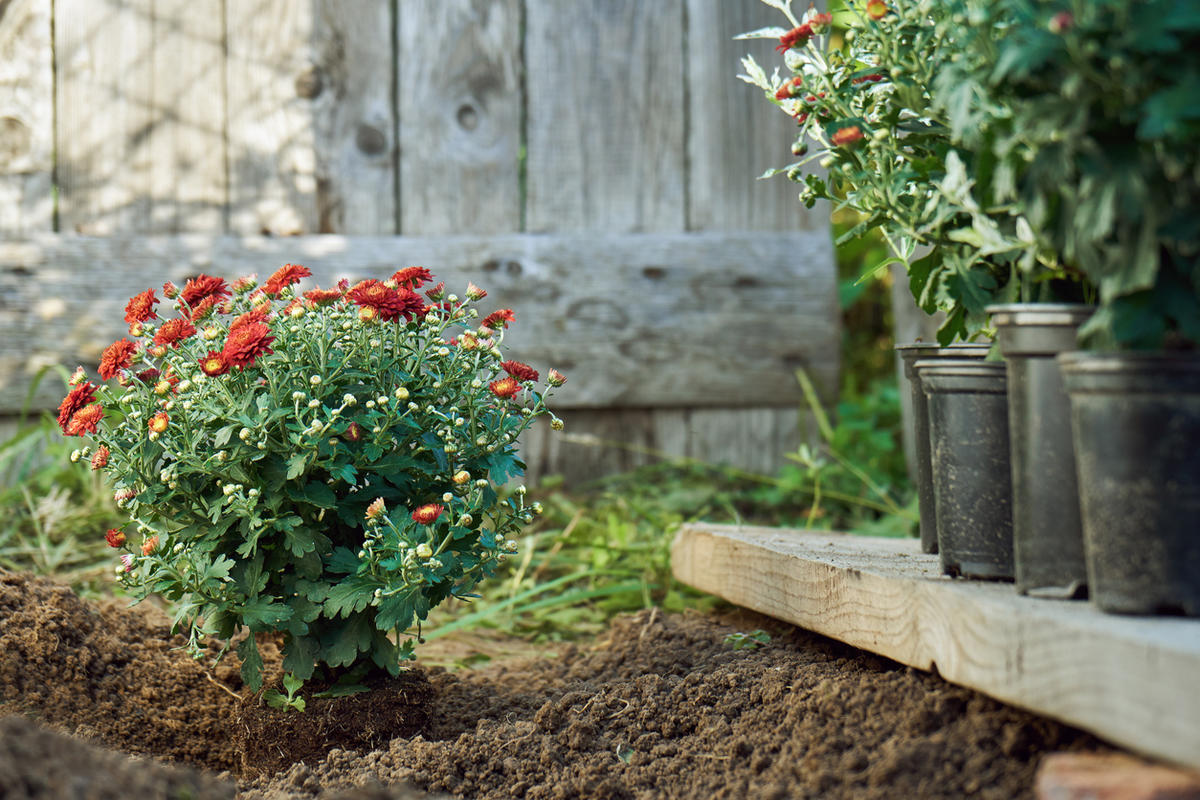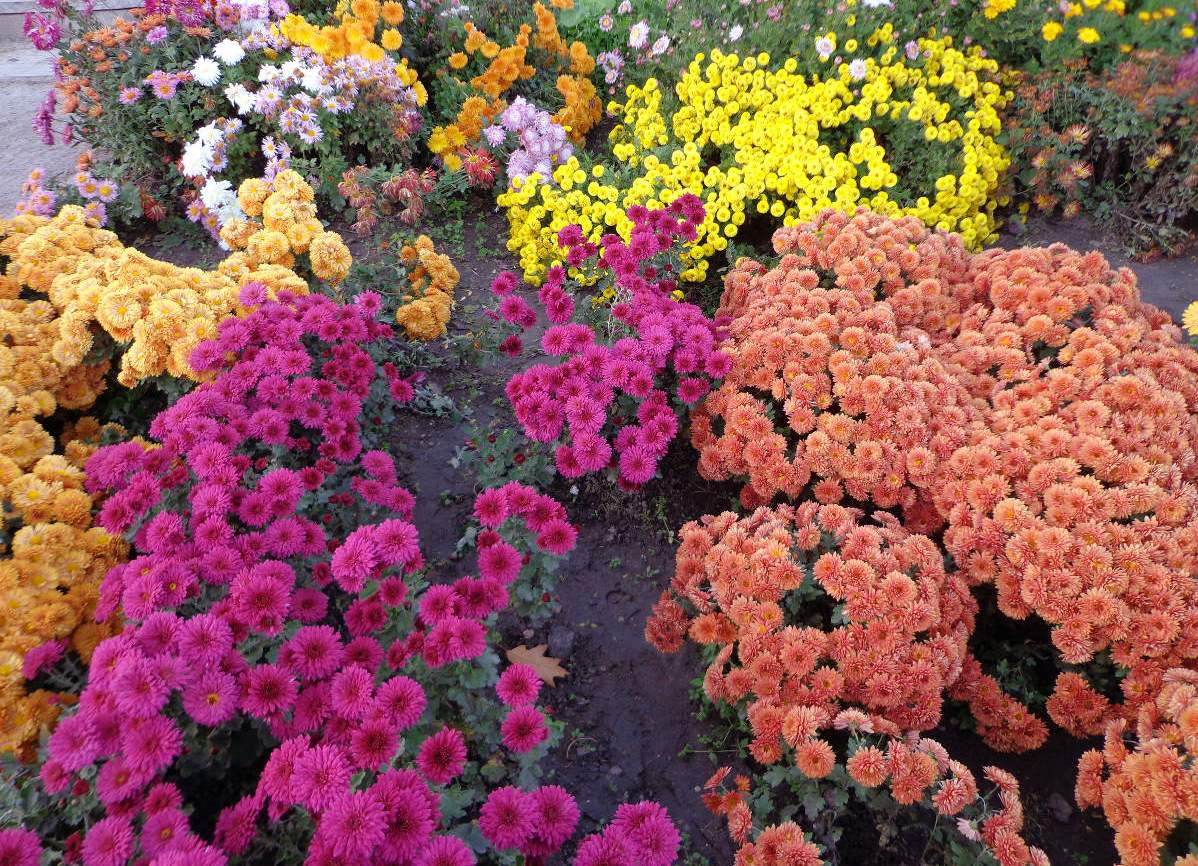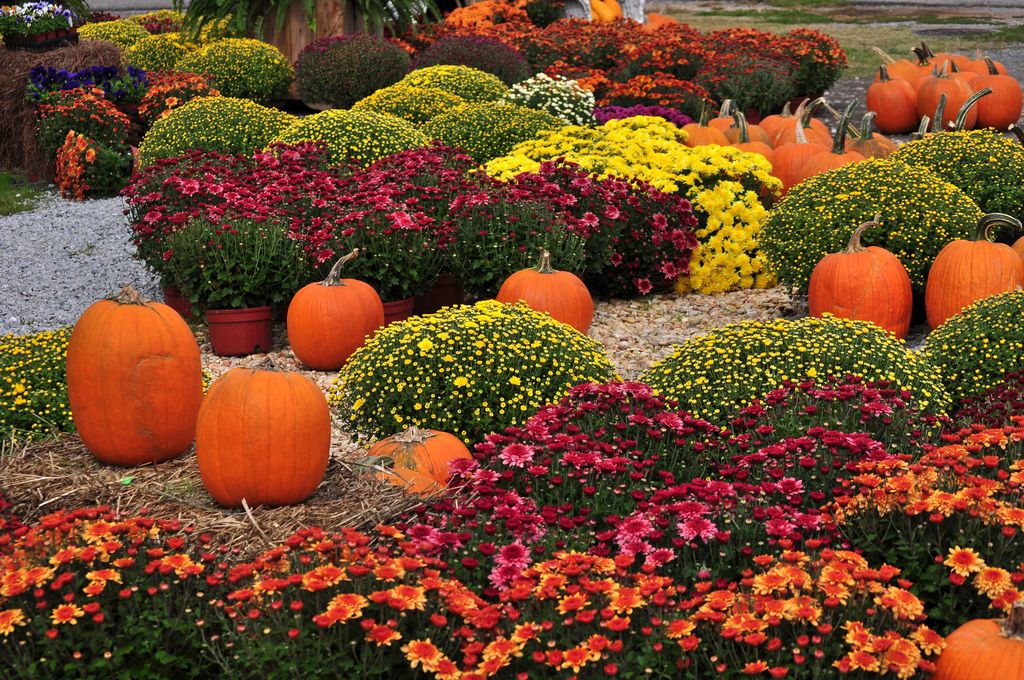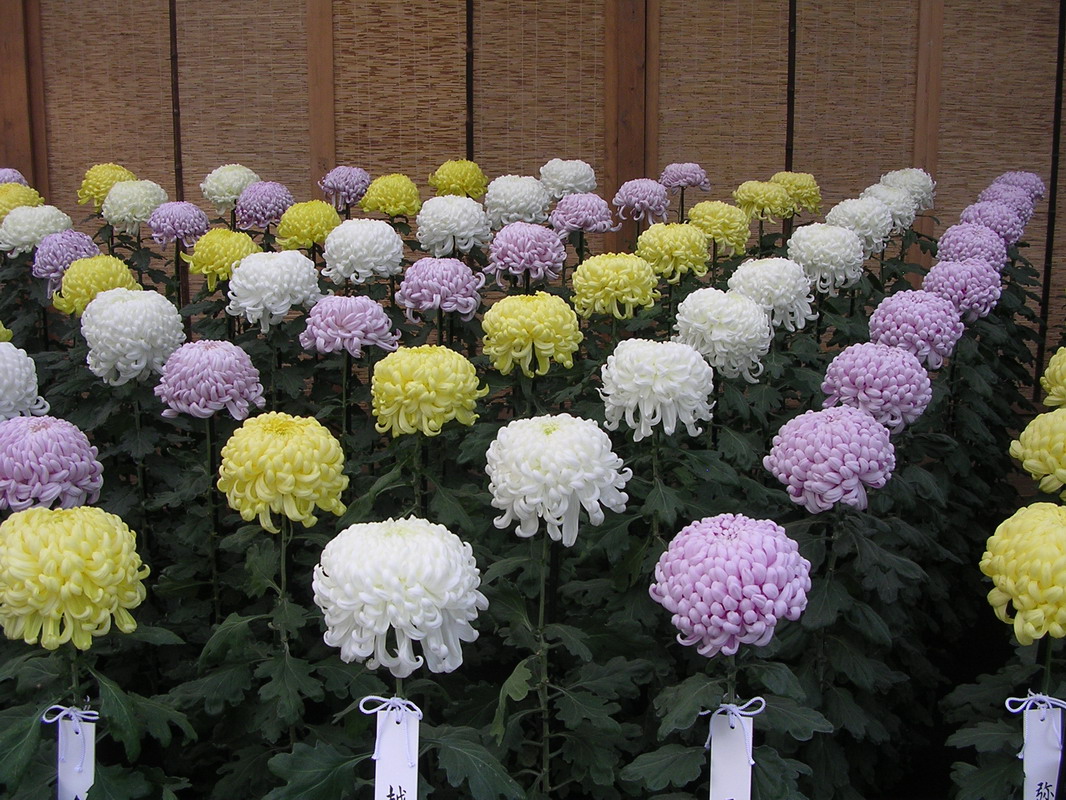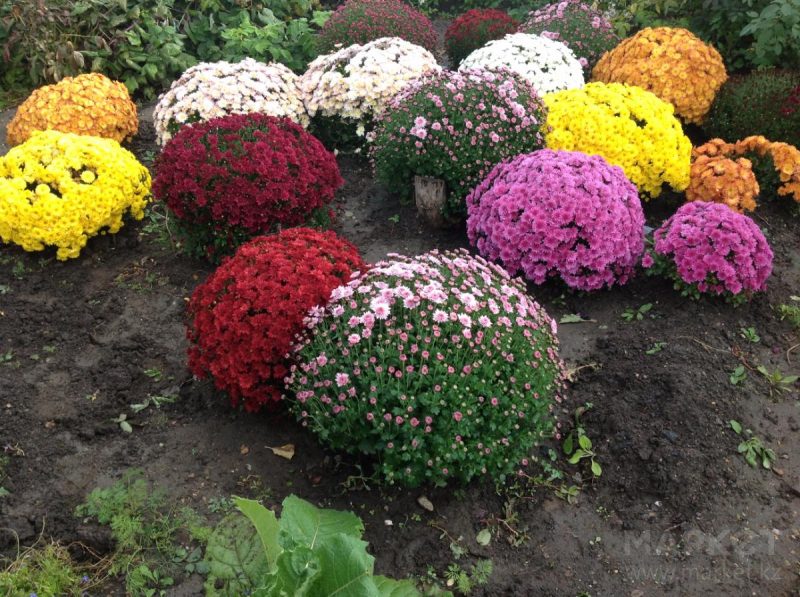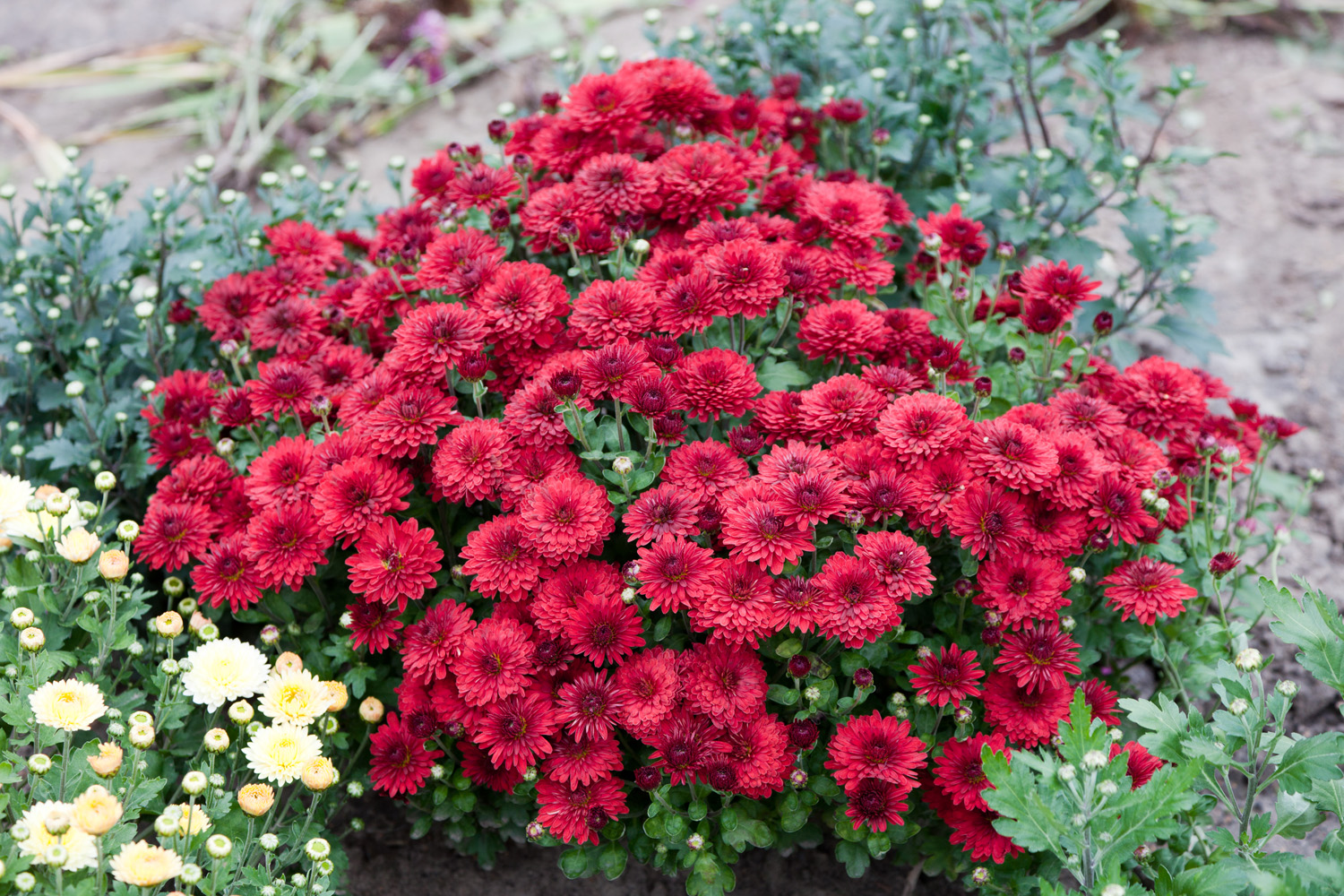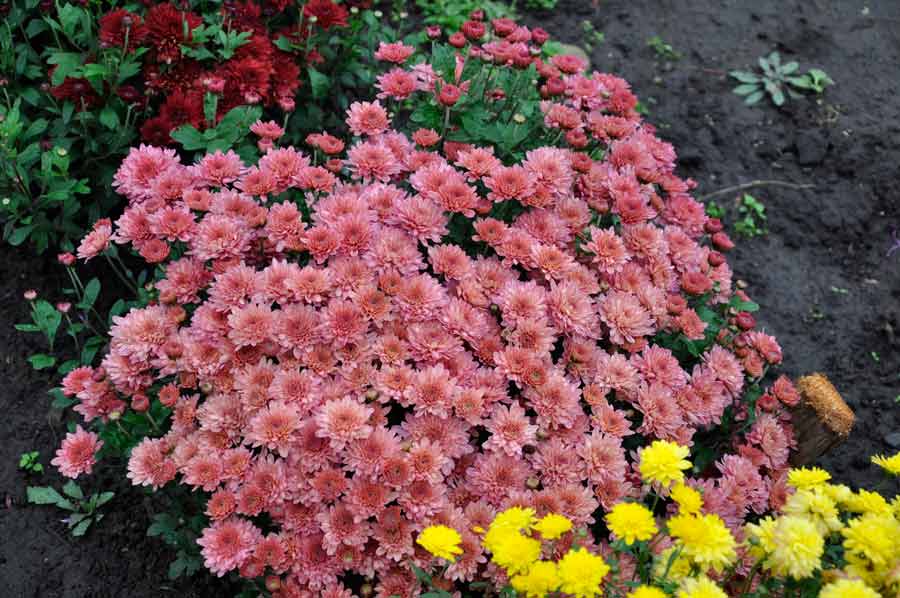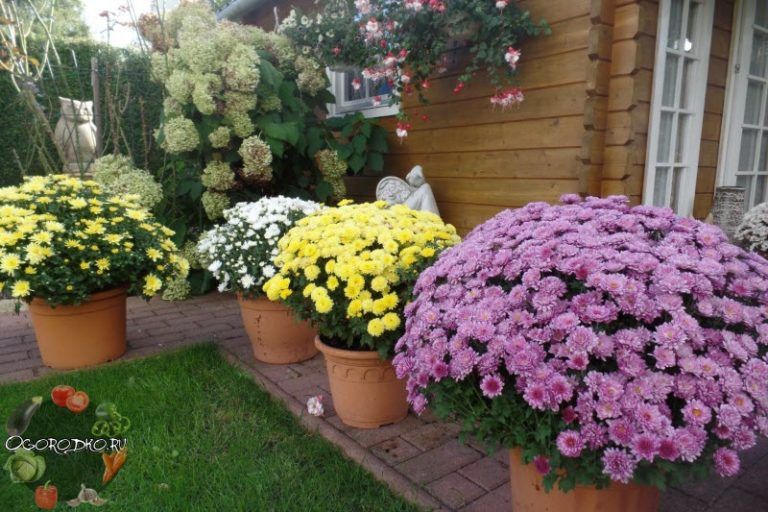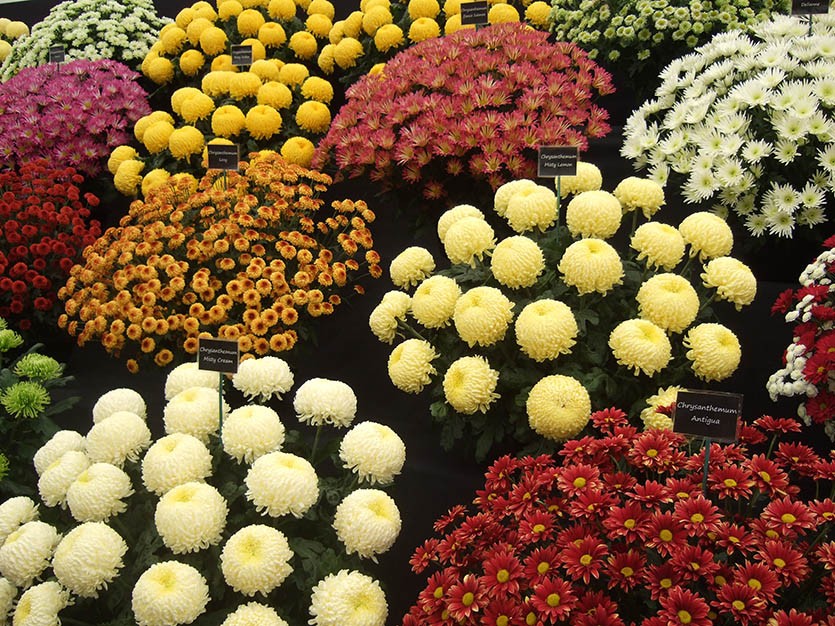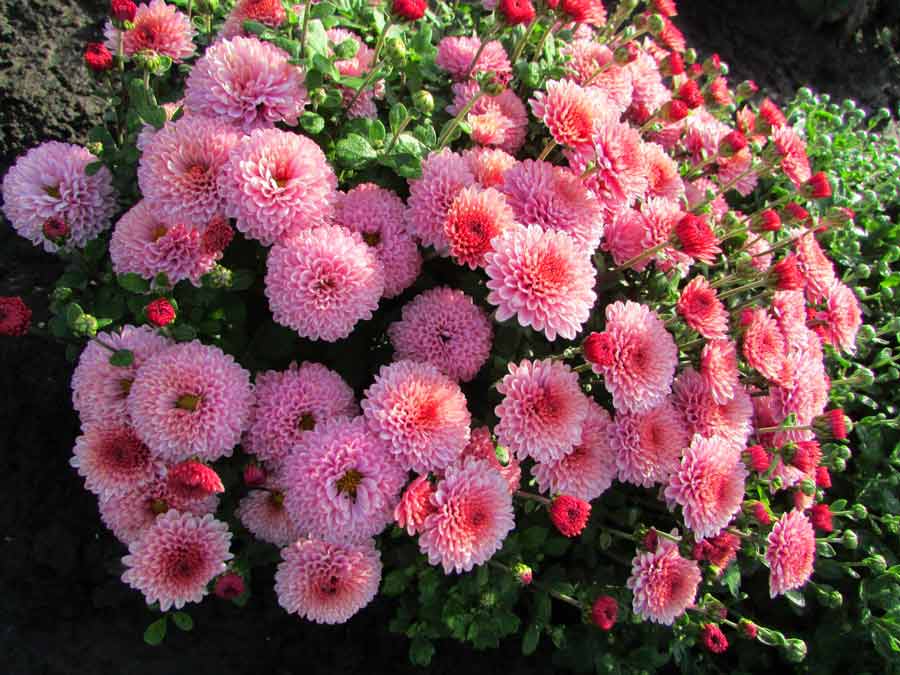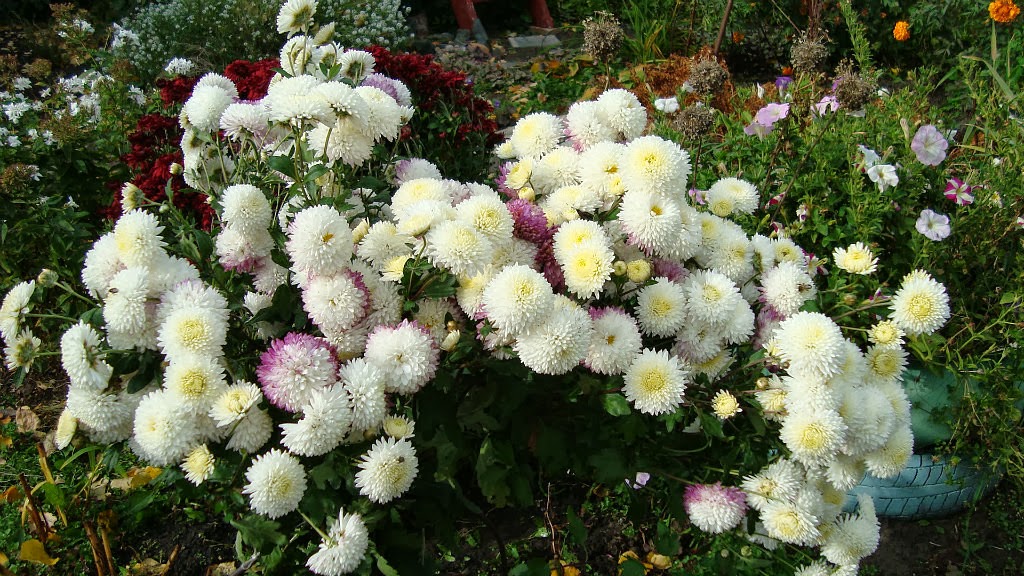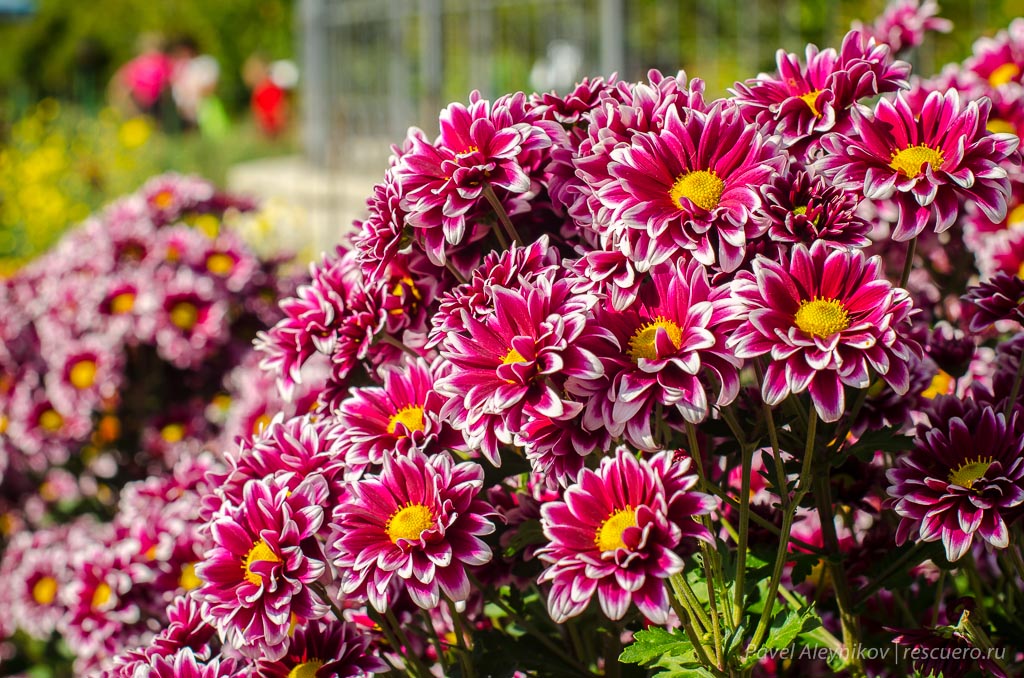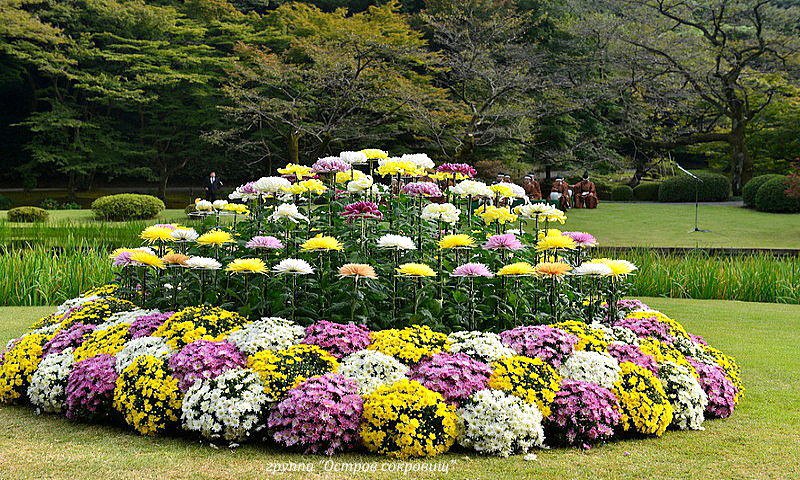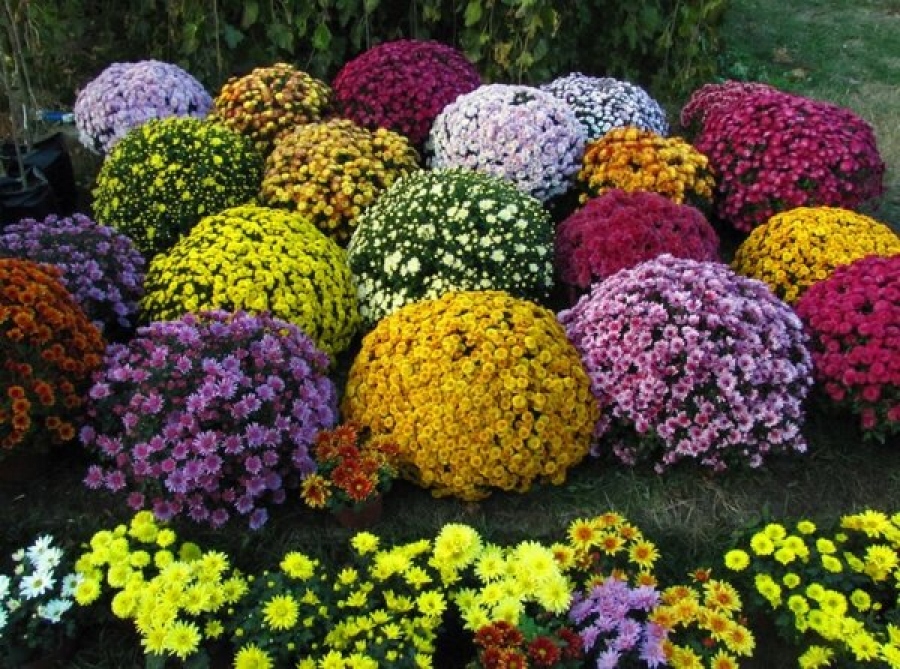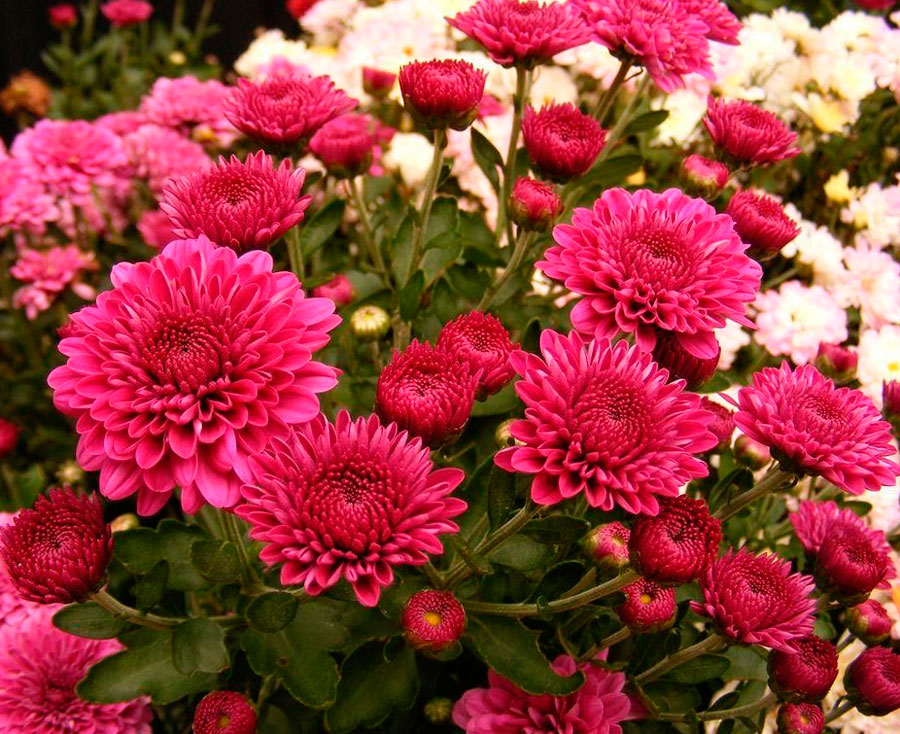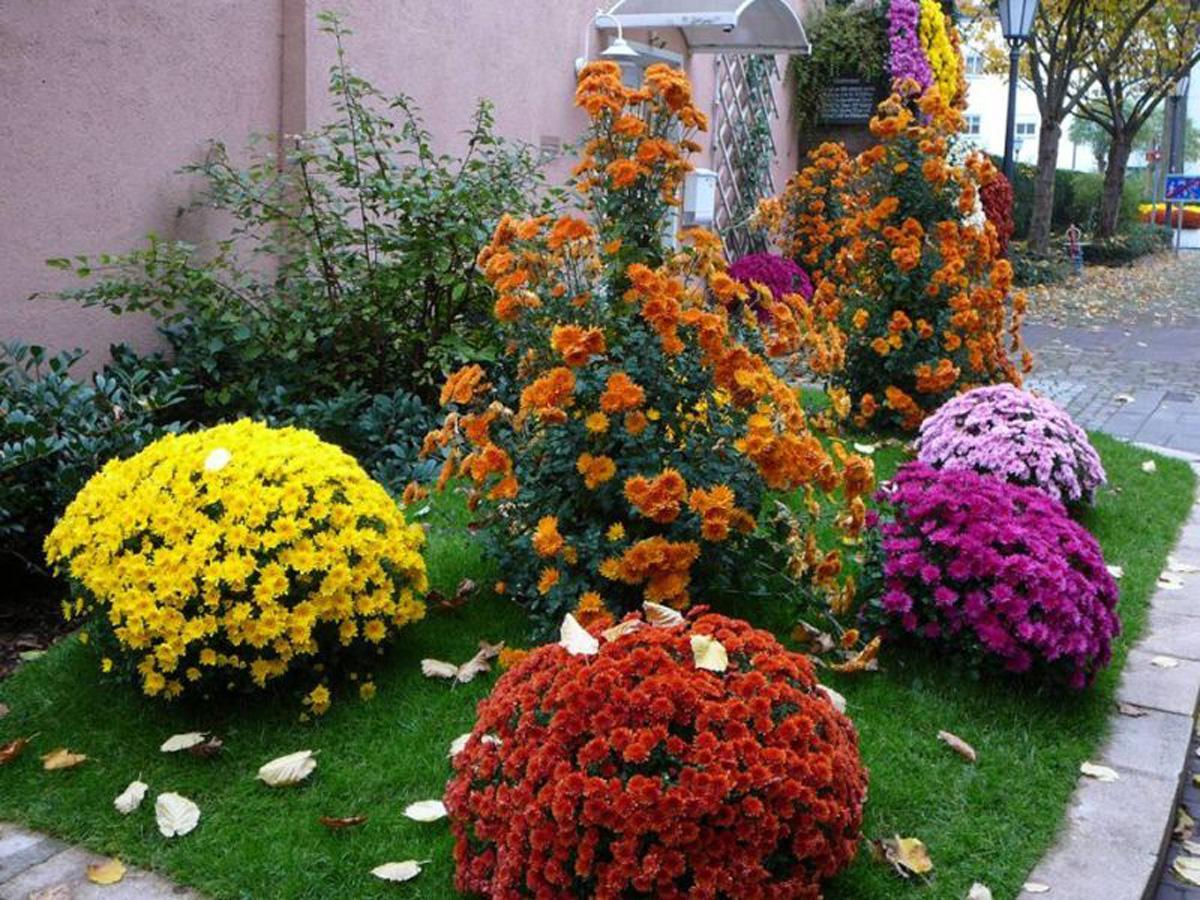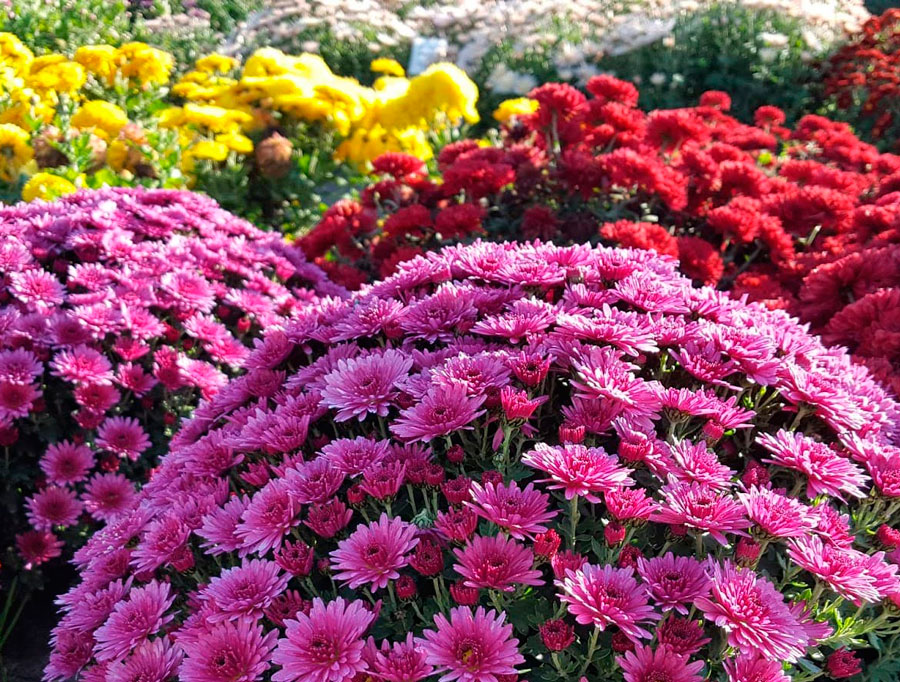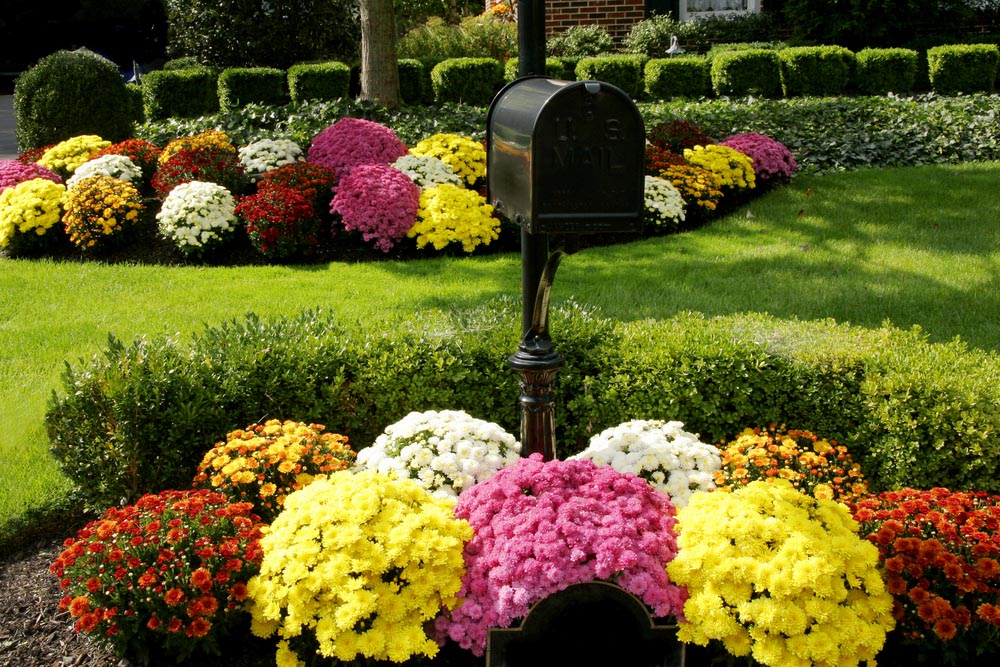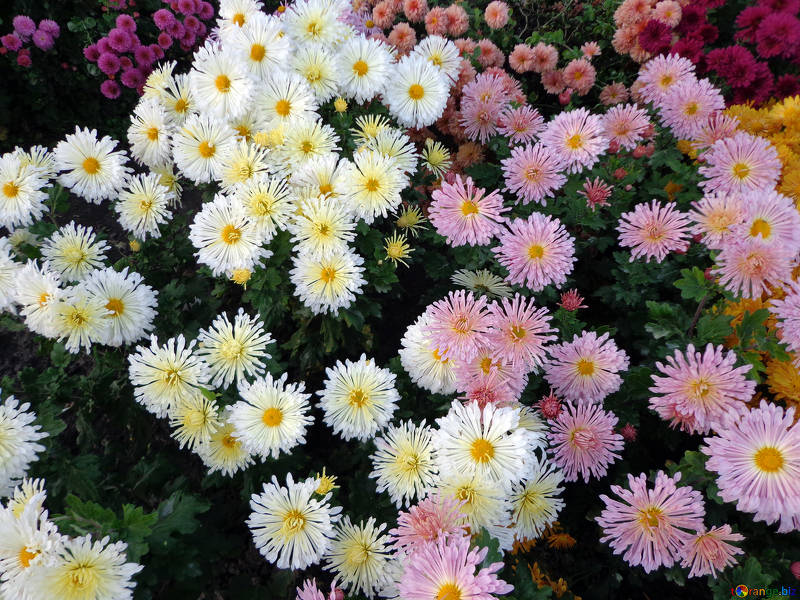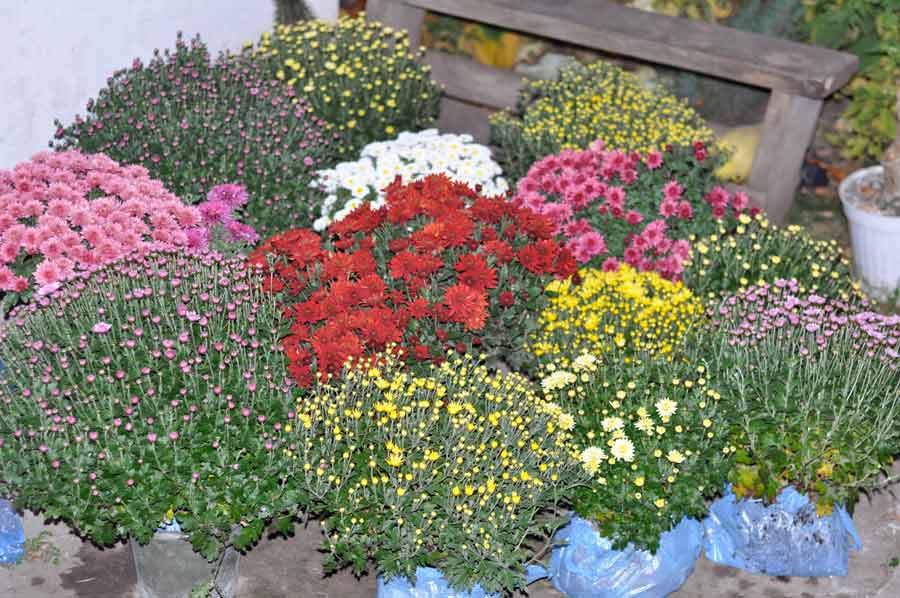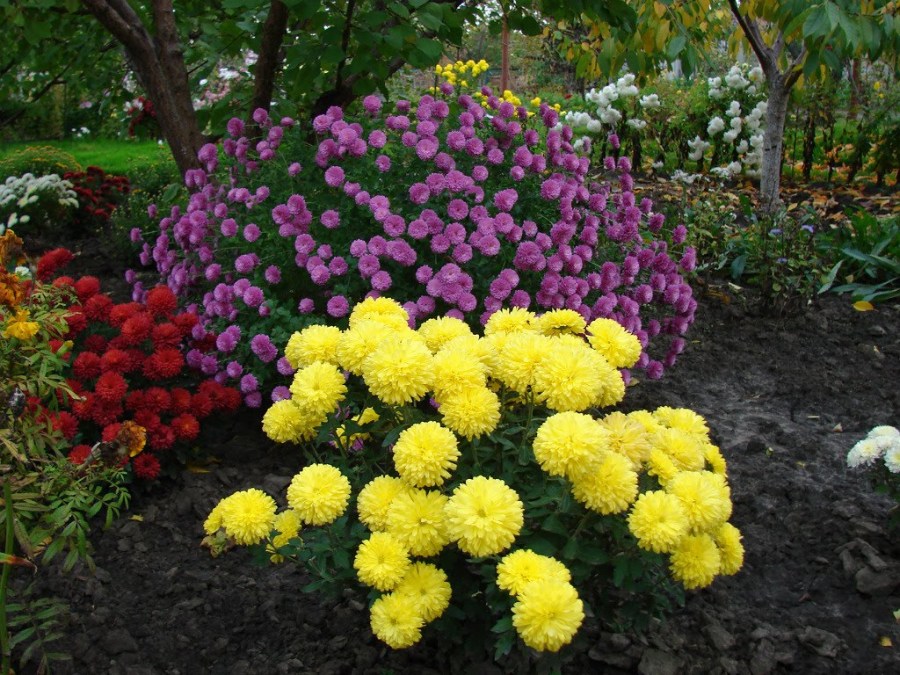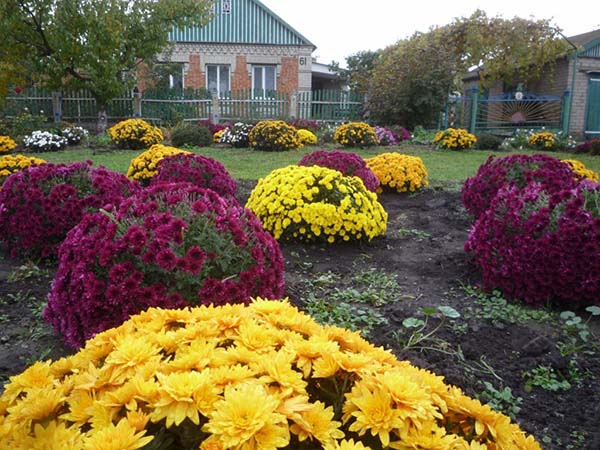Growing problems
If the standards for growing chrysanthemums are not followed, the flower may be exposed to the following dangers.
Diseases
- Verticillary wilting, or wilt. The fungus passes through the root system and leads to yellowing of the foliage, as well as the death of the shoots. In a duel with wilt, fungicides are used.
- Rust. The disease manifests itself in chlorite specks that appear on all above-ground organs of the flower. Later, the spot becomes brown, the leaves begin to turn yellow, and the stems become thin. It is possible to get rid of rust by means of copper oxychloride, copper-soap emulsion or colloidal sulfur.
- Powdery mildew. Absolutely the entire above-ground part of the flower is sprayed with a white coating, which deforms the trunks, foliage, buds, and also flowers. You can heal the plant with Bordeaux liquid.
- Gray rot. The disease begins with the appearance of indistinct brown spots, which subsequently become covered with a fluffy coating, and also cause decomposition of the plant. In this case, use the same medicine as for powdery mildew.
If the first signs of fungal diseases are detected, the chrysanthemum should be immediately treated with the necessary substances in order to save the plant in time. Sometimes plants infect viruses:
- aspermia - manifested in mottling of foliage, as well as deformation of flowers;
- dwarfism - stands out for growth retardation and early flowering;
- mosaic - expressed in a speckled mosaic on leaf plates.
In order for chrysanthemums not to be affected by a viral disease, when working with it, it is necessary to use only disinfected tools, and it is also necessary to get rid of parasitic insects that carry viruses in a timely manner.
Parasites
Among the frequent pests of chrysanthemums (photo above), the following come across:
- Nematodes. These insects carry mosaic viruses, due to which the plants become infected and die. There is no reason to fight them, so the flowers are unearthed and destroyed. For preventive purposes, when transplanting or planting, the bushes should be sprayed with phosphamide, and the ground should be treated with formalin.
- Aphid. Parasites are found on the bottom of the leaf plates or buds. Aphids feed on chrysanthemum juices, which slows down its growth and flowering. With a small number of insects, you should simply remove the leaves with them. If insects have occupied the entire flower, then the plant should be sprayed with Aktara or Aktellik.
- Meadow bug. Like aphids, bugs feed on chrysanthemum juice. Spots appear on the leaves, after which a brown tint, and then this plant dies. The affected bush must be sprayed with a solution of baby shampoo. For preventive purposes, chrysanthemums are treated with phosphamide.
- Snails and slugs. Parasites consume all aerial parts of the flower. Since these insects are considered part of the garden's ecosystem, they must be controlled organically. When building a flower garden, it is necessary to correctly assign crops and monitor the number of pests. So that snails, as well as slugs, could not penetrate the chrysanthemums, chiseled eggshells should be scattered around the bushes or plastic rims should be dug in.
As you can see, garden chrysanthemums require close attention, but this does not mean that caring for them will be difficult.For many gardeners, breeding flowers is a great pleasure, because as a result they acquire lush bushes with colorful flowers, thinning the sweet smell throughout the garden.
Hiding chrysanthemums
Those types of sunny flowers that remain on the street for the winter must not only be cut off, but also covered. This should also be done correctly:
- The formation of pits in the bush should not be allowed. Otherwise, water will stagnate there.
- If the winters are not very cold, then there is no need to do serious shelter. It is enough just to cover the cut bush with peat and dry leaves. When the first snow appears, sketch it on top.
- If the winter is fierce, then you should attend to the creation of a more serious shelter.
You should not wrap up the cut bush from the first cold snaps. Light frosts will only benefit him, hardening. It is recommended to cover the plant with special materials: lutrasil or spandbond. If they are not there, then a regular polyethylene dense film will do. Be sure to clamp it around the edges with stones to exclude the possibility of being blown away by the wind.

Chrysanthemum shelter for the winter
They never use shavings or peat under the shelter - so they get wet, they will keep moisture. Stagnation of fluid will provoke the death of the flora.
Reproduction methods
How to grow chrysanthemums? If you plant them with seeds, then you will not save the varieties, so it is best to use one of the other possible methods:
- division of bushes;
- cuttings;
- separation of root growth.
Chrysanthemums can be planted and replanted only in spring, best of all in May, when there are definitely no frosts or sudden cold snaps. If you postpone the planned event to the beginning of summer, the flowers will not suffer a bit from this.
If you bought planting material in early autumn or late summer, do not delay planting. Try to plant the plants outdoors no later than September 15th. Otherwise, before the onset of frost, the roots of chrysanthemums simply do not have time to get stronger. If you missed this point, do it differently: just cut the cuttings and place them in indoor pots until warming.

Just put the flowerpots in a dark room with a low temperature of about 4-6 degrees, which will not change until spring. For example, a heated terrace or loggia may be suitable. Throughout the winter, all you need to do to maintain is water the plants periodically.
At the end of February, chrysanthemums can be moved to the greenhouse. There they will need to be watered much more often. And by the end of March, when the seedlings grow up, it will be possible to make cuttings by cutting off shoots up to 10 cm long.
Cut cuttings should be placed in a box with earth, humus and sand and covered with glass. For the development of the root system, plants usually take a month, after which they can already be transplanted into open ground.
Reproduction methods
There are three main breeding methods for chrysanthemum bushes.
Cuttings
This is the most common breeding method for planted chrysanthemums. They are engaged in cuttings in the fall, during the pruning of seedlings. Shoots 6-8 centimeters long are used as cuttings.
Dividing the bush
Some people prefer to propagate chrysanthemums by dividing the bush.
To divide the seedling, it is dug out in advance and carefully separated with a pruner or by hand. Then the separated parts of the plant are planted in separate holes.
Root shoots
Another common breeding method is the use of root shoots. To do this, you will have to dig out a bush and separate several powerful roots from the root system. They are germinated in a container with water, after which they are planted in the ground.
Chrysanthemum keeled: characteristic features, varieties, photos
The homeland of the keeled chrysanthemum (chrysanthemum carinatum Shousn) is the North of the African continent. This highly branched erect flower grows up to 70 cm in height.Its green mass is fleshy, grayish-green, the protruding parts of the leaves are linear. Baskets of inflorescences are single, collected on lateral branches in groups of 2-3 pieces. The diameter of the flowers is 5-7 cm. The second name of the keeled variety is tricolor, since the corollas of its reed petals are usually painted in 3 colors: white, yellow, pink or reddish brown. Fruits are achenes with caps. The flowering period is from the last decade of June to the end of September.
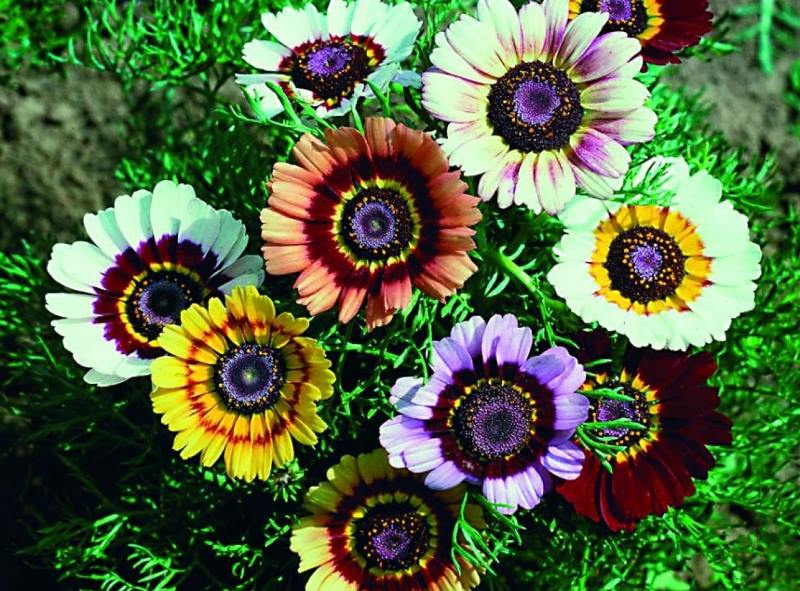 Chrysanthemum keeled Rainbow
Chrysanthemum keeled Rainbow
Today the following varieties are most popular:
- chrysanthemum Masquerade - simple or double flowers of cream, white, yellow, pinkish, red color with a brown bottom;
- Cockade - simple snow-white baskets with egg, red and brown rings, 5-6 cm in diameter;
- Terry chrysanthemum Dunetti - ligulate petals of pale pink, white, yellow or carmine color, tubular lozenges of the core - dark red;
- Atrococenium - inflorescences are simple baskets, rich dark red color;
- chrysanthemum East Star - white-yellow petals and a dark brown core;
- Nordstern is a simple white inflorescence with a carmine ring near a dark core;
- chrysanthemum keeled Grace - yellow reed petals, with a wide red rim closer to the base and a dark brown core;
- Chrysanthemum keeled Rainbow - this is the name of a mixture of 2-3-colored flowers with a different combination in the petals of yellow, white, red, orange, burgundy and brown core;
- chrysanthemum Rainbow - a terry mixture of colors, similar to multi-colored umbrellas with a ringlet, red, white, yellow or pink;
- garden chrysanthemum Tricolor - tricolor flowers similar to chamomile.
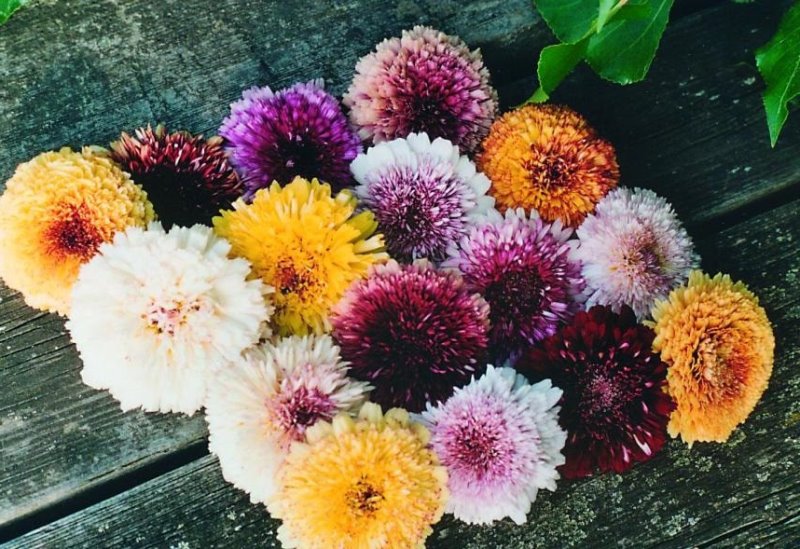 Chrysanthemum Dunetti
Chrysanthemum Dunetti
Due to its unusual color, keeled chrysanthemum is very often used to decorate flower beds and mixborders. Favorites are the lush Dunetti chrysanthemum with ball-shaped double baskets and the Rainbow chrysanthemum with a variety of colors. It is also grown for cutting, retains freshness in bouquets for 4-5 days.
Planting methods
You can grow bush chrysanthemums by sowing seed material, planting cuttings, as well as dividing an adult plant. The soil for planting should be nutritious and loose, with good drainage properties.
Growing from seeds
Correct sowing in January allows the seedlings to grow, get stronger and bloom in the first year of cultivation.
-
The seeds of an ornamental crop are not planted in the ground, so they are sown on the surface. Different varieties should be marked.
-
The germination temperature is maintained between 17-18 ° C, and the first shoots appear in about a couple of weeks. Fortified seedlings are carefully dived into individual planting containers of sufficient volume, filled with a nutritious soil mixture.
-
Plants are planted in open ground flower beds from May to mid-June. It should be remembered that bushes grown from seeds may well form flowers that have no external resemblance to the parent plant.
Planting chrysanthemums with cuttings
-
All varieties of chrysanthemums are easy to cut. This breeding method is the most popular and simplest. For cuttings, a healthy and well-developed root shoot is used, which should have approximately 2-3 internodes.
-
Rooting is carried out in a nutritious substrate that includes a couple of parts of fertile soil, one part of humus and half of a part of medium-grained sand. The cuttings are buried 25–30 mm and kept at a temperature of 18–20 ° C. To maintain an optimal microclimate over the finished planting tank, a polyethylene "dome" is required to provide the required level of air humidity. After a couple of weeks, young plants are fed with a weak solution of "Ideal" or "Rainbow" fertilizer.
-
Four weeks after the start of rooting, a powerful root system develops on the cuttings, and new plants are planted on open ground flower beds around May-June. The flower garden for planting should be well-lit by the sun, represented by nutritious and permeable soil. All annual varieties are planted only in the spring, but perennials can be planted both in spring and autumn.
Reproduction by dividing the bush
The peculiarities of the agricultural technology of shrub chrysanthemums include the need to dig up the plant every three years, divide it into parts and plant it, which prevents the degeneration of the ornamental culture. Violation of this rule makes the bushes sparse and the flowers small.
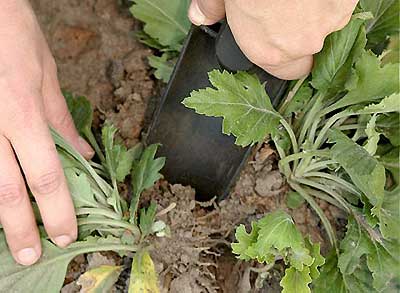
The plant is dug up with care so as not to damage the root system, and if they have excessively long lateral shoots, they are cut off
The plant is carefully dug up, the root system is freed from the ground, old shoots are removed, after which fresh branches are divided and planted in pre-prepared planting holes, located at a distance of a quarter of a meter from each other. The event takes place in late spring or late August
Perennial chrysanthemum varieties
Chrysanthemums are striking in their diversity: different shapes, sizes and shades of flowers, as well as the height of the stem, contributed to the unification of a large number of varieties of flowers into subgroups according to these criteria.
Chrysanthemum groups according to the shape and height of the bush
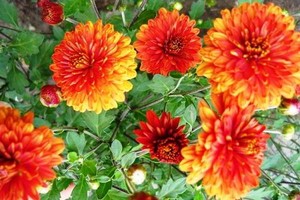 Garden chrysanthemums differ in height, which ranges from 10-120 cm. There are three plant varieties according to this criterion.
Garden chrysanthemums differ in height, which ranges from 10-120 cm. There are three plant varieties according to this criterion.
Stunted. The size of low-growing chrysanthemums does not exceed 30 cm, but they are considered the most beautiful garden flowers. Small chrysanthemums form a spherical bush consisting of small flowers. These low border chrysanthemums are good for planting in a flower bed along the edges. Among the famous varieties it should be noted:
- “The talisman - the dwarf chrysanthemum is distinguished by its bright beetroot-crimson color.
- Barbara - flowers have a delicate lilac-purple hue.
- "Snow White" - white terry low flowers.
- Evening lights - this name is directly related to the flowers of scarlet color, like a festive fireworks.
Medium-sized. Attractive bushes, reaching 40-50 cm in height, decorate not only the flower beds of the summer cottage, but also the territories next to the paths, gazebos, and fences. The best varieties of this kind:
- "Dawn" - a yellow-brown shade of flowers sets the autumn mood.
- "Dune" - the peculiarity of this variety is that it has the ability to change the color of its flowers. Blooming yellow-brown flowers turn into yellow-gold in a matter of days.
- "Princess Diana" - lilac chamomile-shaped flowers have a yellow center.
- "Lily" - dark crimson inflorescences will dilute the flower beds with their rich shade.
- "Umka" - white flowers, reminiscent of the shape of a pompom.
- "Daughter of Rosetta" - flat inflorescences have a white or pink tint.
- "Tamara" - flowers in the shape of a ball delight the eye with a pleasant purple hue.
- "Amber Lady" - has a golden hue of flowers.
We also advise you to familiarize yourself with the description of mignonette varieties and care features.
Inflorescence size
This criterion divides garden chrysanthemums into the following subgroups:
- Small-flowered. Simple and double plants form bushes with inflorescences, the flower diameter of which varies from 2 to 10 cm. The stems are 20 cm to 1 meter high. The shape of the leaves is reminiscent of oak. Such plants have high frost resistance and are easy to care for. They begin to bloom in September and continue until the very frost, and even hibernate in the open field.
- Mid-flowered. This decorative variety is grown not only for the garden, but also for cutting cuttings, which are transferred to the home. Flowers are grown on window sills, balconies, terraces, where the sun shines well.The diameters of the flowers vary from 10 to 20 cm, and the height of the stem varies from 30 to 70 cm.
- Large-flowered. Large flowers with a diameter of 15-25 cm allow you to create a tall lush bush with a maximum height of 120 cm. Large-flowered chrysanthemum is not resistant to frost, only some of its varieties are left for wintering in the garden. It is usually grown for bouquets.
Chrysanthemum flower shapes
- Pompom. Tongue-shaped petal assemblies form pom-pom-like beads.
- Terry. Different shapes and types of petals form flat, bent and hemispherical flowers.
- Semi-double. Flat inflorescences with a raised center consist of several rows of petals.
- Non-double. They look like daisies with wide petals slightly curved towards the end, located around the middle.
- Anemoid. Large petals are collected in 1-3 rows that surround the raised, lush middle.
- Spider-like. The beautiful flowers are distinguished by long and thin petals twisted towards the ends. The spider-like shape is formed due to their different location.
Chrysanthemums are also divided by flowering time into: early (bloom in September), medium (bloom in October) and late (bloom in November).
How to feed chrysanthemums
If you follow the agricultural techniques of growing flower "queens" of autumn gardens, they grow quickly. By summer, a large bush develops from a small inconspicuous cutting, and by autumn it already manages to please us with abundant flowering and go into a state of dormancy. With such an accelerated development, frequent feeding becomes a necessity. There should be at least three of them over the summer.
The first time the chrysanthemum needs to be fed until mid-June, that is, even before the buds are tied on the plant. It will help the bush to grow green mass. Top dressing can be prepared from the following components:
- 10 liters of settled water;
- 1 tbsp. spoon of nitrophoska;
- 1 liter of liquid mullein.
Before feeding, the bushes need to be watered well and wait for the moisture to be absorbed into the soil. Then, about 1 liter of nutrient solution is poured under each plant.
The second time chrysanthemums are fed during the bud setting period, from the second decade of July to the second decade of August. A more accurate date depends on the specific flowering time of each species. For the second feeding, you can take:
- 10 liters of water;
- 1 tbsp. a spoonful of superphosphate;
- 1 tbsp. a spoonful of potassium sulfate.
It is carried out in the same way: about 1 liter of nutrient solution is poured under each bush, the soil is pre-moistened.
For the third time, feeding is carried out in the midst of abundant flowering. Prepare it as follows:
- 10 liters of water;
- 1 tbsp. spoon of potassium sulfate.
Otherwise, everything is the same. The land is pre-watered abundantly. Under each bush, 1 liter of liquid fertilizer is applied.
Fertilizers are best applied at dawn or late at night when the sun goes down. Care must be taken to ensure that the nutrient fluid does not get on the flowers and leaves, as the chemicals in it will cause them to burn.
So that as many buds as possible tied on the chrysanthemum, it bloomed faster, and the flowering was friendly, before their swelling, the bushes are sprayed with a growth stimulator Bud for fast flowering at the rate of 10 g of the stimulant per 10 liters of settled water. To spray 10-15 plants, you will need 1 liter of such a solution. You can also use boom forte fertilizer for roses and chrysanthemums.
Description
Chrysanthemum multiflora is a spherical plant with a large number of small and colorful flowers. It can be grown not only in the open field, but also in flowerpots, greenhouses and even on balconies. Many people also like it for the reason that the ball blooms "to the last", that is, until the first frost. In some cases, flowering continues even in winter. But for this it must be transplanted into a flowerpot or greenhouse.

These flowers were first mentioned by Confucius. Many ate chrysanthemums at that time.In addition, they were also used in medicine and in perfumery. Only after some time, chrysanthemums began to be planted in their plots. In nature, garden chrysanthemums are very common; there are over 30 varieties of this plant. However, scientists still tried to bring out even more new subspecies, so that the choice for gardeners was even wider.
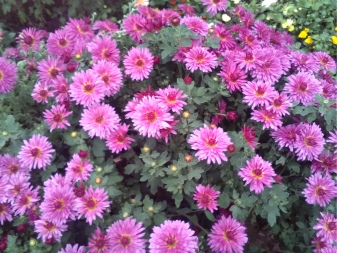
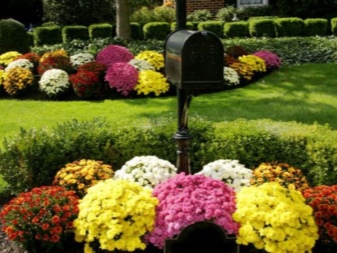
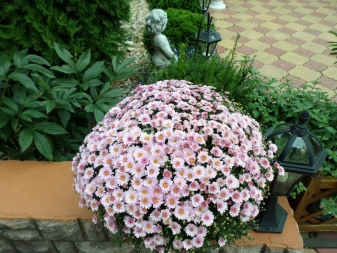
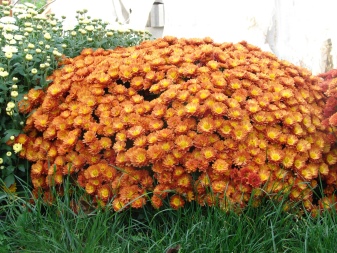

The subtleties of growing a house in a pot
When growing a chrysanthemum at home in a pot, one should not only provide it with competent care, but also take into account the following subtleties of the content:
- to grow a chrysanthemum in a pot, you need to choose the right substrate for this; loose, light and nutrient-rich neutral soil is recommended;
- the soil mixture can be made independently, or you can immediately buy a ready-made composition in the store;
- the percentage of nutrients in the soil mixture will increase if chicken manure is added to it;
- after watering the potted chrysanthemum, all excess moisture should be removed immediately; before the subsequent addition of water, the surface of the earth should dry out quite a bit;
- potted chrysanthemums can be fed not only with specialized, but also with simple, universal mixtures; during the flowering period, the plant is especially in need of phosphorus and potassium, and during the formation of the bush - in nitrogen;
- as the foliage and flowers wither, they must be carefully trimmed;
- before wintering, it is recommended to cut the pot plant to the maximum, leaving only small "hemp" from the root system;
Diseases and pests, treatment
In most cases, Astrovia have strong immunity to diseases and pests, and the best treatment is prevention. However, if the plant is sick, then it must be cured quickly and in a timely manner.
The most common fungal diseases include:
- septoria, which is manifested by the appearance of spots and darkening of the leaves;
- rust, in which white spots appear on the leaves and fusarium wilting, which is characterized by the fact that the leaves turn yellow, dry and fall off;
- powdery mildew - it can be suspected when a white bloom is found on the surface of the plant.
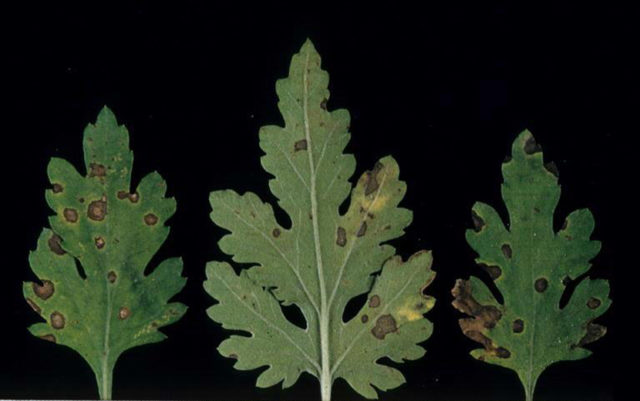
Septoriasis
For the treatment of fungal diseases, the damaged areas are removed and completely treated with fungicides. Of the viral diseases, the mosaic is considered the most dangerous, in which the plant grows slowly, withers, its flowers decrease in size. This disease is incurable, because diseased bushes are destroyed.
Of the pests on chrysanthemums, leaf nematodes, spider mites, meadow bugs, slobbering pennits, tobacco thrips, and aphids most often parasitize. To combat them, insecticides are used (from spider mites - insectoacaricides). The causes of the disease are mainly due to improper or insufficient care.
Cracks also appear on the stems, and the flowers are deformed. Low temperatures and frost can lead to reddening or yellowing of the leaves. Excessive fertilization during the period of active growth can significantly weaken the plant and even provoke burns.
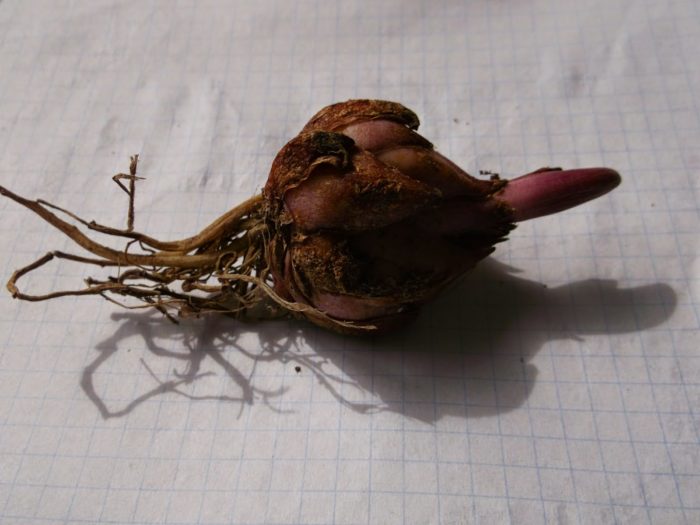
It will also be interesting: Planting lilies in the fall - when and how to transplant a flower to another place and in what month
How to plant chrysanthemums outdoors
In order to eliminate all problems with the growth and development of perennial garden chrysanthemums in the open field, you need to remember about choosing a suitable place, as well as soil for planting.
Landing place
To successfully grow chrysanthemums in the garden, it is very important to stay in the right place to plant. If possible, this should be the sunniest area in the country.
The plant does not like constant drafts, but it does not like stagnant air either, so the place should be ventilated. It is optimal to choose more or less elevated areas, hills, slopes, since it is impossible to allow the root system to be constantly flooded with water.
Garden perennial chrysanthemum is ideal for creating living borders, that is, for decorating garden paths, as well as creating beautiful compositions around the house.
The soil
This blooming perennial will grow smoothly in loose (moisture-permeable) and fertile soil. In terms of acidity, the soil should be neutral or slightly acidic. The optimal soil for planting garden chrysanthemums is well-drained loamy or sandy loamy soil.
If the soil is sandy, then the planting site should be well dug up and filled with compost or humus.
If your soil is heavy, moisture passes poorly (and its stagnation has a very negative effect on perennials), then you should make good drainage by pouring some sand on the bottom.
Direct landing
So you bought a bush (a seedling in a bag with soil) of garden chrysanthemum in the fall (or divided the mother bush, germinated cuttings), chose a suitable day (preferably cloudy), or early morning or late evening. It's time to plant him.
Step-by-step instructions for planting chrysanthemums in open ground:
Decide on a place, prepare a landing hole (usually 30-40 cm deep).
Drain as needed (put some sand on the bottom of the hole).
Place the bush, straighten the roots.
Cover with fertile soil and compact well so that the roots are in good contact with the ground.
Cut the bush 1/3 or even leave a small stump
Now it is important that the roots take root.
Water liberally.
Mulch with peat or humus .. Video: a method of planting chrysanthemums in the fall
Video: a method of planting chrysanthemums in the fall
Popular varieties of perennial chrysanthemums
To understand how planting and caring for perennial chrysanthemums is performed correctly, you need to find out which varieties can be called the most popular. Common varieties include the following:
- "Alpine". Such low chrysanthemum flowers resemble bushes. The view is very popular in the organization of various design elements, for example, an alpine slide, because the height of the plant is up to 14 centimeters. The flower is distinguished by dissected leaves of a gray-green hue, and the diameter of the flowers is about 3-5 centimeters. The plant pleases with its beauty in the middle of summer. And also the flower is not afraid of frost, so in winter it can be left without shelter.
- "Korean". This is a perennial garden bush chrysanthemum, which is cultivated mainly in areas with low winter temperatures, for example, in Siberia, although its homeland is eastern countries (Korea, Japan, China). The flower requires shelter for the winter, but in all other respects it easily tolerates all the features of the Russian climate.
- "Altyn ai". These are garden chrysanthemums that reach a height of 60 centimeters. The flowers have a rich yellow hue and are about 8 centimeters in diameter. The plant blooms from mid-August to mid-October or even early November.
- "Autumn Dreams". Such bush chrysanthemums bloom for three months, surprising gardeners with semi-double flowers of a rich yellow hue, which reach 7.5 centimeters in diameter.
- "Dina". This perennial chrysanthemum is very popular. These are small bushes about 45 centimeters high, which begin to delight the gardener with flowering from the second half of August until the beginning of November. In diameter, the flowers reach 8 centimeters, and also have a snow-white shade.
- "Zemfira". This spherical chrysanthemum blooms for almost three months, starting in late July. It has small and non-double flowers, distinguished by a beautiful light pink shade.
Asking the question of how to grow chrysanthemums, you need to determine the goals. Someone plants a plant just to decorate or create a bouquet, others use it as a kind of border elements, and still others use it as an element of landscape design.Keep in mind that large flowers can be grown only in the south, and for other regions of the country, plants that are more resistant to Russian winters, for example, the "Korean" varieties, will do. In addition, keep in mind that the hive needs updating after three years.
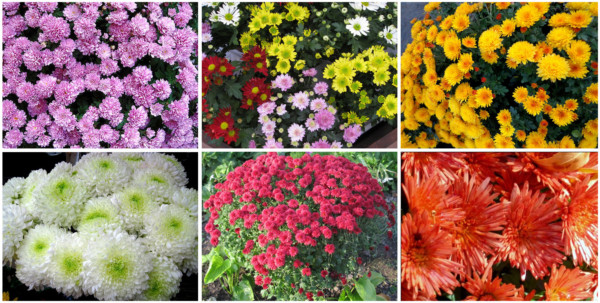
Outdoor chrysanthemum care
In one place, without transplanting, chrysanthemums grow for 2-3 years. Then they need to be transplanted to another place. In addition, the bush is divided every 3 years. Throughout the growing season, the land around the chrysanthemums in the flower bed must be weeded and loosened. At this time, the root system and underground shoots are actively developing, due to which the formation of the bush occurs. Then the loosening is stopped, otherwise there is a risk of damage to the young growing growth.
Despite the fact that perennial chrysanthemums easily tolerate drought, during the growing season they need a lot of moisture. Water them abundantly at this time, 3 times a week. During the period of bud setting and flowering, you can practice "dry" watering - neat and shallow loosening with hilling and uncoiling bushes. Such actions will bring the greatest effect in rainy or wet weather.
It is better to water chrysanthemums in the evening, after 18 hours. Watering should be abundant, so that the soil is saturated with water to a depth of 20-25 cm, while trying to prevent water from getting on the leaves.
Mulching with a thin layer of 3 cm is very useful. Peat, crushed tree bark, pine needles or straw are used as mulch. Such a "carpet" allows for a long time to preserve the looseness and moisture of the soil, slows down the growth of weeds, does not allow pathogens of fungal infections to enter the bush from the soil along with water spray during rain and watering, and creates the necessary conditions for the successful development of the root system and the plant as a whole.
Propagation by cuttings: step by step instructions
All varieties of chrysanthemums can be propagated by cuttings, including medium-sized and tall hybrids. The bush for cutting cuttings is selected in the fall, despite the fact that cuttings must be done in the spring. The mother bush is cut to the root before the first frost begins, dug up and transplanted into a flower pot. They are abundantly spilled and put away for the winter in the basement, where the air temperature does not rise above + 6 ° C. High air temperature can affect the premature emergence of shoots.
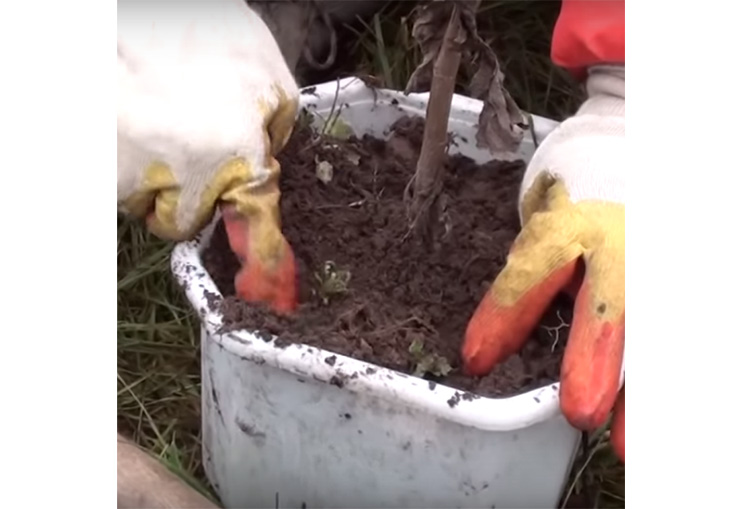
The mother bush is dug up for the winter and removed to the basement
During wintering, the soil should always be moist. It is impossible to overdry the earthen lump, since the plant can quickly die. Cuttings from the mother plant are cut in early spring. To do this, a bush from a cool room is transferred to a room in mid-February, watered abundantly and fed with nitrogenous fertilizers. After 10 days, young shoots will begin to form on the plant. When they reach 10-15 cm in height, they can be separated from an adult bush.
Wintering chrysanthemums in the open field
Only frost-resistant varieties of perennial garden chrysanthemums are capable of withstanding the winter outdoors. Basically, these are Korean hybrids, perfectly adapted to the climate of central Russia, including they grow in the Moscow region. Thanks to the work of breeders, it has even become possible to grow chrysanthemums in the open field in Siberia. But here, too, there are some nuances. On a dry, elevated area, the plants will not freeze, but if the area is located in a lowland where moisture constantly accumulates, chrysanthemums will freeze.
But even if the correct place for chrysanthemums in the country was chosen (elevated and dry), they will need to be prepared for winter. With the onset of autumn frosts, when the foliage on the bushes withers, the specimens remaining on the street are cut off and preventive treatment with pesticides is carried out (copper oxychloride 0.8% and nitrophene 1%). How to prune bushes? Pruning can be done high and low, to the very root.In the first case, in the spring you will have to remove the remnants of old shoots.
Leaving plants in the ground, they need to be insulated, but not every material is suitable for this purpose. You cannot use as insulation:
- leaves - the ground under them becomes damp and the plants mate;
- sawdust - pathogenic microorganisms develop in them;
- peat - due to the increased moisture capacity, it freezes, and with the onset of spring it thaws for a long time.
In order for the chrysanthemums to winter safely, it is best to do the following: spud the stems with ordinary earth, then cover with boxes, and throw covering material on top in 1-2 layers. It can be purchased in a store or used fabrics, old clothes. Another reliable way to preserve chrysanthemums is to cover the previously hilled bushes with spruce branches or branches (you can cut any), and from above with fallen leaves, with the arrival of the first frosts. In order for the chrysanthemums not to rival the shelter, it should not be heavy and dense.
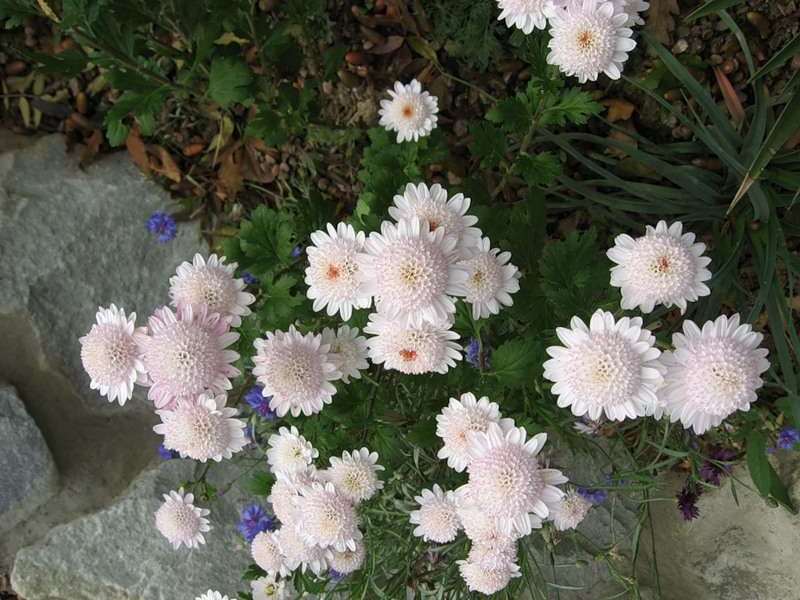 Chrysanthemum white pompon in the garden
Chrysanthemum white pompon in the garden
With the onset of spring, all the stems remaining from last year are removed, and the main dead shoot is twisted out of the soil, since its growth does not resume, and the development of the plant occurs due to lateral underground shoots.
In heat-loving non-frost-resistant varieties, the stems are cut in October, leaving a length of 15–20 cm, and the leaves are cut off. Then the bushes are dug out together with an earthen lump, placed in boxes and transferred to a room with an air temperature of 4–6 ° C, preferably light. When new shoots appear on the bushes, they begin to be watered moderately.

